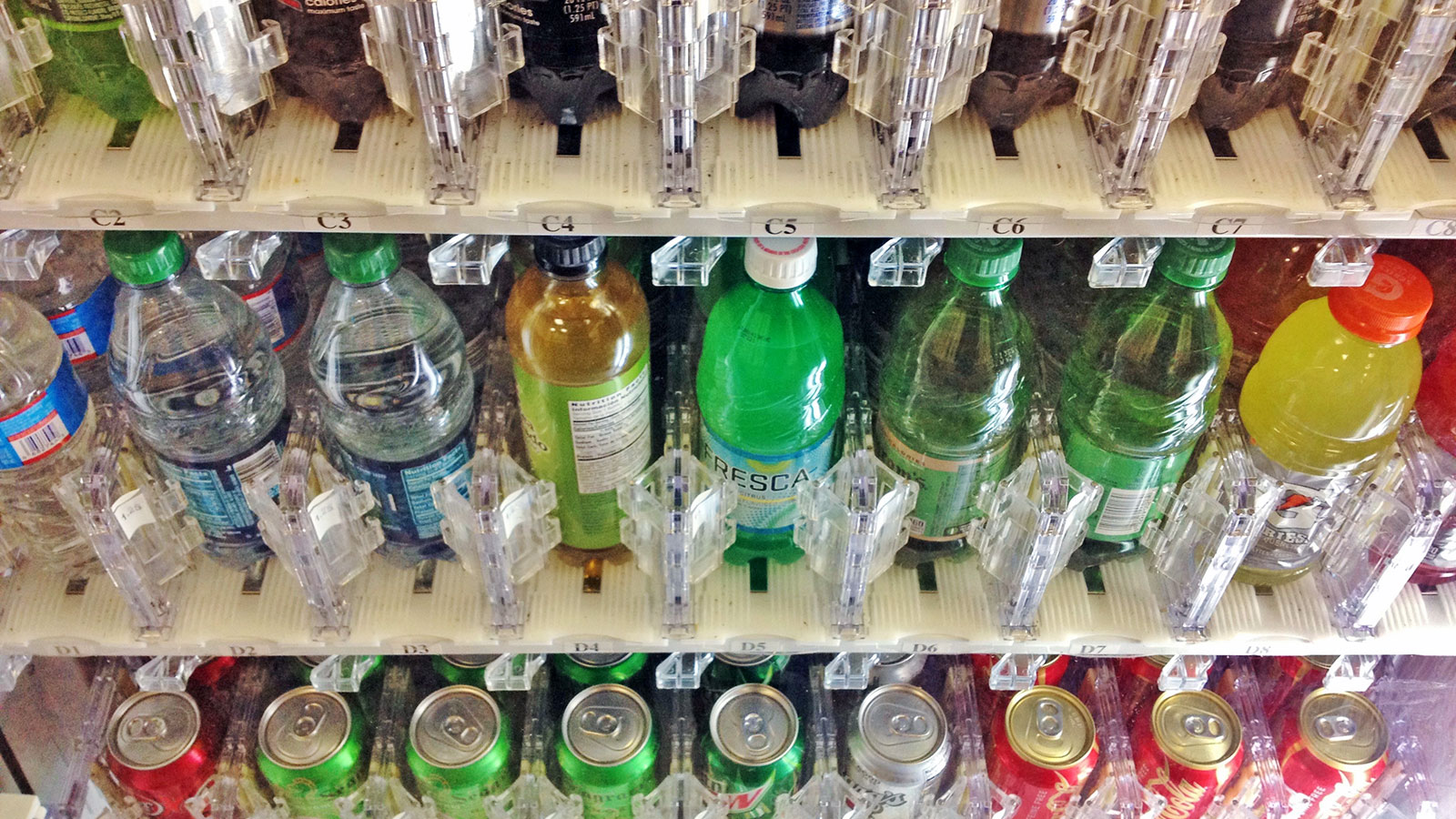Q. Dear Umbra,
Soda vending machines are refrigerated. How much energy (or CO2) does a typical soda vending machine consume?
Andrew
A. Dearest Andrew,
Most of us are familiar with the frosty refreshment that awaits whenever one pops open a soda can — an ideal reinforced by years’ worth of soda commercials. The cans are always sweating, the drinkers often are too (when they’re not polar bears, anyway), and the first sip is frequently associated with jumping into the ocean, sledding, and other such bracing activities. A soda that’s anything less than instantly, lip-tinglingly cold is downright un-American — or that’s what they’d have us believe, anyway.
So yes, our vending machines are refrigerated to deliver on that kind of promise. Exactly how much energy it takes to keep those cans at tobogganing-down-the-Matterhorn temps varies a bit by machine: It could be anywhere from 2,500 to 5,690 kWh of juice per year, which translates to 3,025 all the way to 12,347 pounds of carbon emissions per year (calculating with these figures). That’s about the equivalent of driving more than 13,600 miles on the upper end — a lot of global warming for an ice-cold soda. And if you’re curious how a vending machine compares to some other common workplace appliances, this energy audit found that soda machines sucked up considerably more power than copiers, water coolers, coffee machines, and regular old refrigerators.
Why the electricity bonanza? Like fridges, your average vending machine is running 24/7, but doing so less efficiently. Unlike fridges, it has the added burden of big, flashy fluorescent lights illuminating its face.
You don’t mention why you’re interested in this topic, Andrew — are you in charge of soda sales at an office or school? In a position of power when it comes to vending machine contracts? Or simply a concerned pop quaffer? I’m going to assume the latter, if you don’t mind. Which leads to my next question: What can we, as a nation of concerned soda sippers, do to help?
We can lobby our bosses, upper management, or whoever makes the decisions regarding vending machines in our workplaces, schools, stadiums, etc., to choose the best machines on the market, and operate them in the most efficient way possible, that’s what. Because as the range of energy consumption above suggests, not all vending machines are created equal. So what do we want? Repeat after me:
- Energy Star machines: They use about 40 percent less energy than non-rated models, and they include nifty features like software that shuts off the lights on nights and weekends.
- Occupancy sensors: These easy-to-install gadgets use an infrared sensor to detect if any potential soda buyers are around. If not, they shut down the compressor and the lights after 15 minutes of inactivity, then reawaken when someone strolls over (they periodically fire up the refrigeration, too, so the cans stay nice and cool). Bonus: Because running machines create heat, adding to the building’s AC demands, turning them off provides a double savings.
- Delamping. If a fancy machine isn’t in the budget, there’s always the option of simply turning off the machine’s lights (or if you prefer the technical term, delamping) for an energy savings of 35 percent. The machine will still work without the cheerfully illuminated photo of a sweating can on the front.
- Smart siting: Soda machines should always be placed in the shade, because direct sunlight forces the fridge to work harder. If you do go the occupancy-sensor route, locate the machine in a low-traffic area where casual passersby won’t trip the sensor. That machine should only spring to life when someone means business.
These steps can save plenty of energy and cash. But if you’ll indulge me one more radical idea, Andrew: We could do even more on this front. What if — now hear me out — we relaxed our obsession with ice-cold beverages just a bit? This isn’t the first time I’ve griped about electrically fueled on-demand cooling for our drinks, I know. And perhaps eliminating soda machines wouldn’t work in every situation.
But let’s say we’re talking about your office building. If we absolutely must get our daily fix of fizz (and I don’t even have space today to get into the health implications of soda), would it be so terrible to ditch the vending machine and store the sodas on a shelf somewhere? To grab your drink, pour it into a reusable glass, and pop in a few ice cubes from the ice cube tray in the office kitchen? I should mention that your average new refrigerator/freezer draws about 650 kWh of power per year or less — waaaay less than a vending machine. Think about it, America. In the meantime, I’m off for a beverage break — just as soon as I delamp my desk bulb here.
Tepidly,
Umbra



